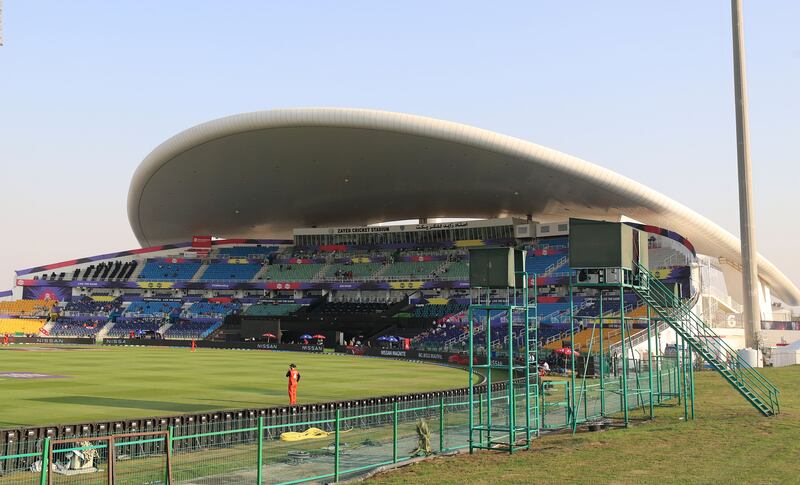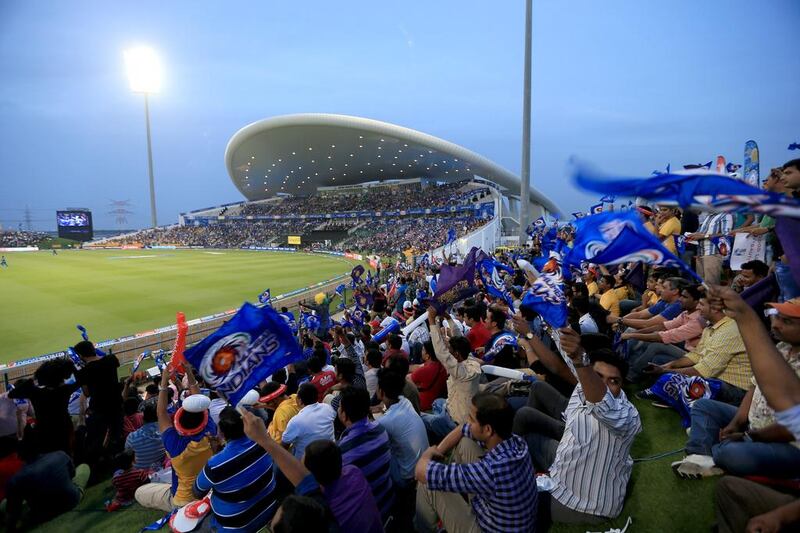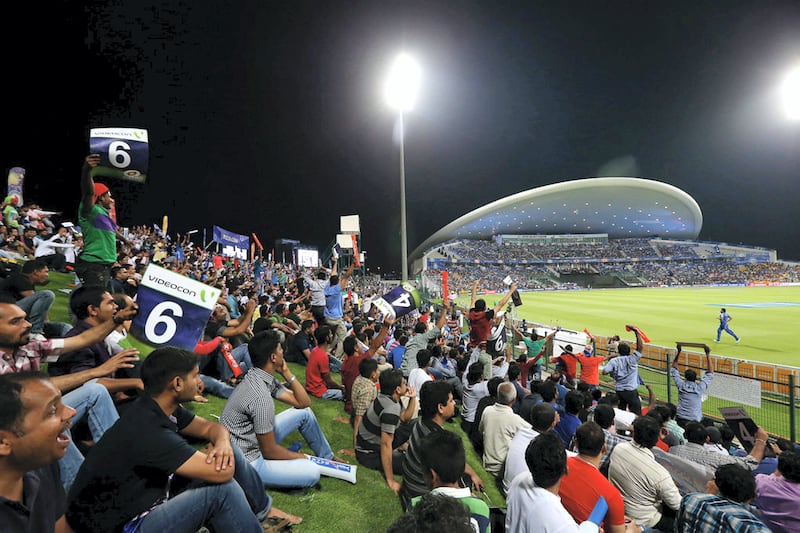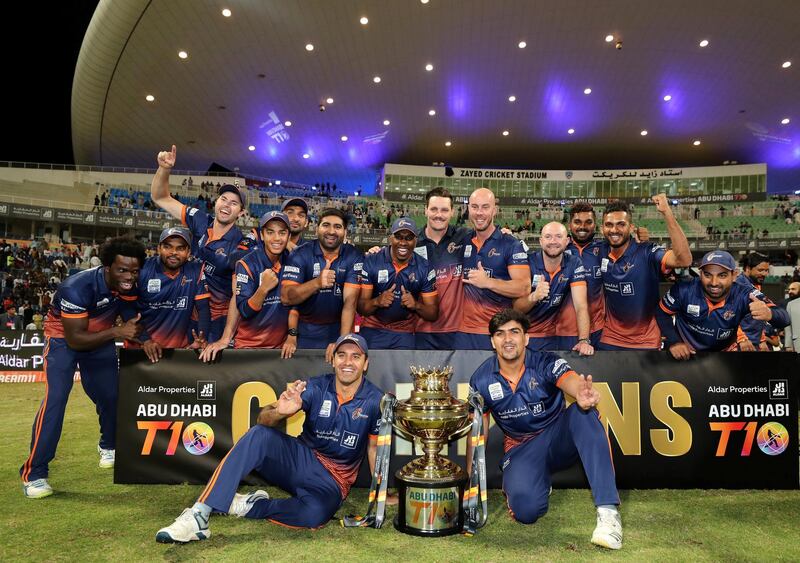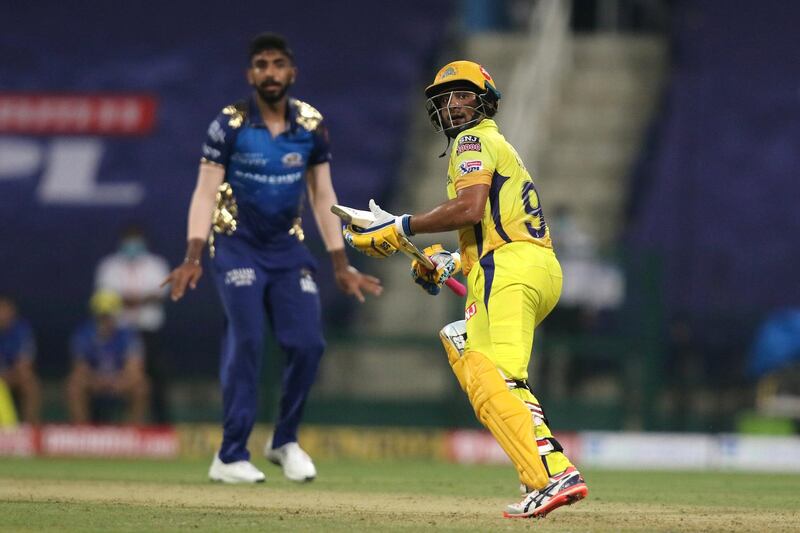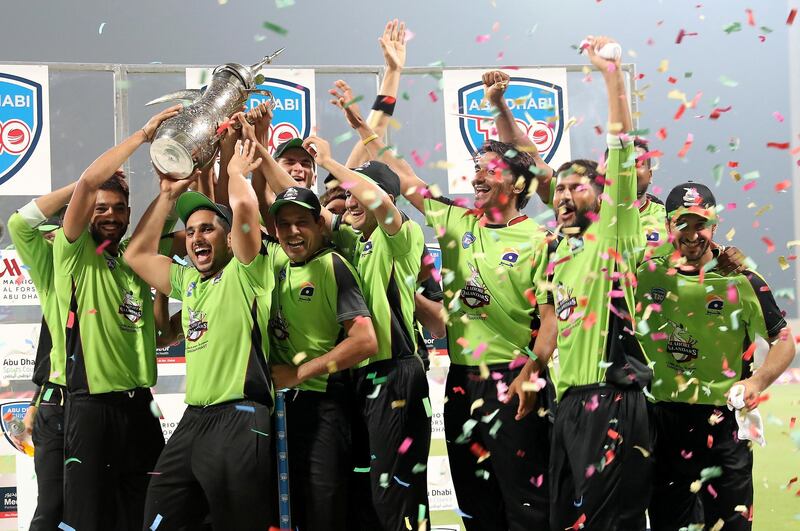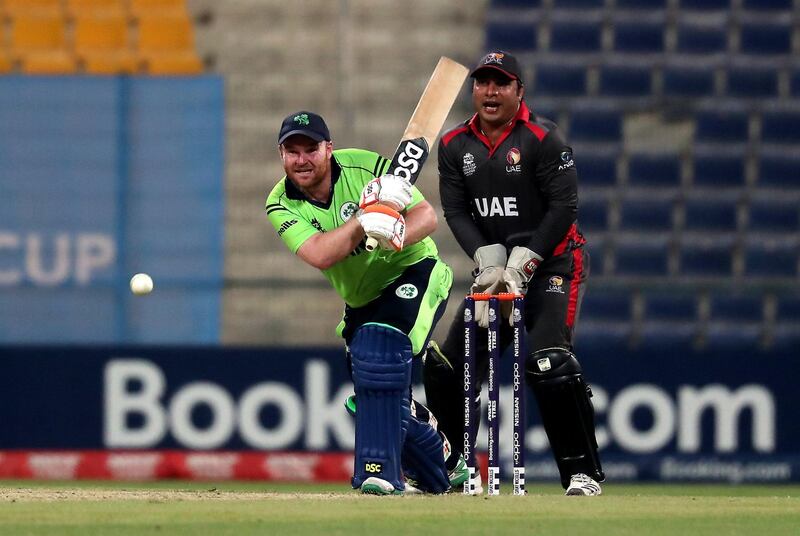The main stand at the Zayed Cricket Stadium might be one of the most eye-catching structures in world cricket, and appear like something out of a science fiction movie.
Viewed from certain angles, it looks like the Starship Enterprise has landed in the desert so Captain Kirk can settle down to watch a bit of cricket.
But, despite the futuristic end result, parts of the origins of the stadium’s design were comparatively rudimentary.
After entering a design competition for a new cricket ground in the UAE capital in 1999, one of its architects had to explain the strikingly ambitious roof using coat hangers.
“The biggest challenge of the design process was to try to persuade our structural engineer, a brilliant colleague called Dr Wael Hussein, the roof structure could be built,” said Brian Johnson, managing partner of the architects, Godwin Austen Johnson.
“To this end, I resorted to constructing a wire version of the roof from coat hangers. Dr Wael was convinced and proceeded to design the beautiful structure that is there today.”
Back then, the idea that the ground in Abu Dhabi might one day host World Cup cricket was not even a consideration. The original concept for the ground was to have just one main stand.
But, “after discussion with the client, it became clear that the audience figures may be larger than anticipated because of the importance of cricket in India and Pakistan,” Johnson said.
As a result, there is a smaller stand at the northern end of the ground. In contrast to the two modern structures at either end, there are also grass banks square on to the pitch which are more akin to an English country out-ground, or venues in New Zealand and Australia.
The capacity for the ground is in excess of 20,000, although it will be capped at 70 per cent of that for the T20 World Cup.
Around 11,500 can be seated in the main stand, under a curved “soft-prop cantilever” roof. The canopy reaches 65 metres at its apex.
The idea for the shape of the main stand originated from Bryn Lummus, an architect whose other project include Raffles Hotel in Dubai.
“He proposed the concept of two intersecting crescents - the one being the stadium seating facing the pitch, and the other being the roof structure which faced the other way,” Johnson said.
“It is this dynamic of the two crescent shapes that gives the structure its visual power.
“In simple terms, a soft-prop cantilever means that the cantilever has an additional method of support which is not fixed.
“It is a good way of way of achieving the unobstructed visibility needed on the inside of a stadium as no one really wants to see columns.”
There are 900 tonnes of steelwork in the roof structure, held in place without the use of pillars.
Given the complexity of the task, it became a group effort. There were the Dubai-based architects, as well as Al Habtoor Engineering from the same city.
Two separate companies from South Africa were also engaged in the process, while the roof was erected by a Malaysian contractor, with the cladding provided by a Sharjah-based company.
“It was a complex roof,” said John Abbott of Arup, the company tasked with designing the steel roof structure.
“It is curved and it cantilevers nearly 70m from three concrete masts at the back, supported by steel ties from the tops of the masts.
“The ties can’t be seen from the field so the huge roof appears to float above the seats, almost without support.
“Unusually for a stadium roof, it is clad on the bottom surface as well as the top, which enhances the dramatic floating effect.”
While the roof was being built, it was propped up by five temporary steel towers, which held the steelwork in place while the sections were bolted together and while the cladding was installed.
“As is often the case, the structure isn’t stable until all the parts are bolted together,” Abbott said.
“The contractors had to work very accurately, so that all the parts would fit. Most of the sub-assemblies were big, consisting of several tonnes of steelwork, so handling and assembly was challenging.
“The last step, in June 2002, was to carefully lower the supports at the temporary towers, allowing the 900-tonne steel structure to support itself.
“This, all while we were sitting on the concrete steps below it, confident that it would stand on its own when the props were out.”
